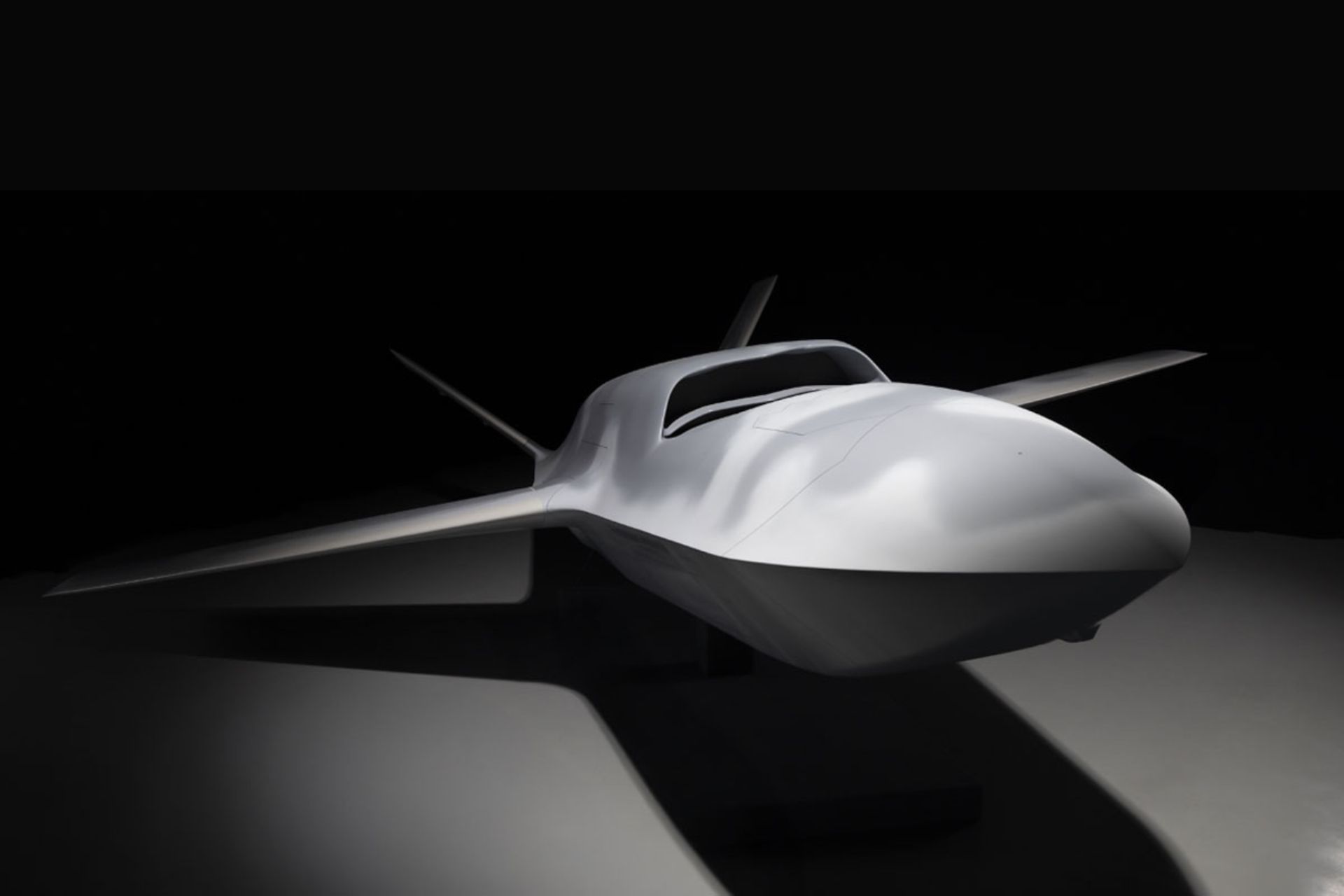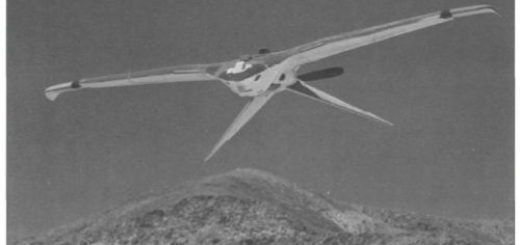General Atomics YFQ-42 Combat Drone to Begin Ground Testing to Enhance Range Survivability of US Stealth Fighters

{loadposition bannertop}
{loadposition sidebarpub}
On May 1, 2025, General Atomics Aeronautical Systems, Inc. (GA-ASI) confirmed that the development of its new YFQ-42A combat drone is progressing according to schedule, as part of the U.S. Air Force’s Collaborative Combat Aircraft (CCA) program. Coinciding with the official launch of the ground testing phase by the Department of the Air Force, the company announced that flight tests are expected in the coming months and that a full-scale model of the drone will be publicly exhibited during the Beale Air and Space Expo beginning June 7. This milestone follows the designation of Beale Air Force Base in California as the site for the first operational support unit dedicated to the CCA fleet, marking a key step in the transformation of U.S. airpower.
Follow Army Recognition on Google News at this link
Designed for interoperability with F-22 and F-35 fighters, the YFQ-42A features a dorsal air intake, elongated fuselage, V-tails, and internal bays capable of carrying AIM-120 AMRAAM air-to-air missiles (Picture source: GA-ASI)
The YFQ-42A is one of two platforms selected for the CCA program’s first experimentation phase, alongside the YFQ-44A developed by Anduril Industries. Officially designated as a prototype under the “YFQ” nomenclature, the YFQ-42A is derived from the XQ-67A demonstrator created for the Air Force Research Laboratory’s Off-Board Sensing Station program. It is part of General Atomics’ Gambit family of systems, which focuses on software modularity, long-endurance, and integration into collaborative combat architectures. Designed for interoperability with F-22 and F-35 fighters, the YFQ-42A features a dorsal air intake, elongated fuselage, V-tails, and internal bays capable of carrying AIM-120 AMRAAM air-to-air missiles. This configuration is intended to ensure low observability while providing additional payload capacity and onboard mission processing in contested environments.
Current ground tests are evaluating propulsion systems, avionics integration, autonomy modules, and control systems. These assessments are intended to mitigate technical risks ahead of the flight testing phase, scheduled to begin by the end of 2025. The first YFQ-42A unit entered production in 2024, following the successful maiden flight of the XQ-67A on February 28 of the same year. The YFQ-42A effort is part of the broader Next Generation Air Dominance (NGAD) program, which aims to ensure U.S. air superiority in the coming decades.
Operational roles envisioned for the YFQ-42A include direct coordination with crewed aircraft, carrying additional munitions, and supporting intelligence gathering and electronic warfare missions. The drone is currently designed for conventional takeoff and landing, although future variants may adopt air-launch or ground-based deployment methods independent of runways. The platform is also expected to feature a modular autonomy system capable of rapid adaptation to evolving operational theaters, in line with the U.S. Air Force’s Agile Combat Employment (ACE) strategy, which promotes decentralized and flexible force deployment.
The estimated unit cost ranges from $25 to $30 million, significantly lower than current-generation manned fighters, allowing greater operational risk tolerance without considering the drone expendable. The U.S. Air Force anticipates producing up to 1,000 CCA units, with a planning ratio of two drones per crewed fighter, thereby increasing tactical mass while reducing logistical and manpower requirements. The YFQ-42A is initially expected to support air-to-air missions, supplementing the limited internal weapons capacity of stealth fighters. Additional capabilities, including precision strike, electronic warfare, and ISR (intelligence, surveillance, reconnaissance), may be introduced in future iterations.
A full-scale mockup of the YFQ-42A was first unveiled at the Air, Space & Cyber Conference in September 2024. The CCA program’s selection process began in January 2024 with five competing vendors: General Atomics, Anduril, Lockheed Martin, Boeing, and Northrop Grumman. In April 2024, General Atomics and Anduril were selected to proceed with testing under Increment 1, ahead of a final decision scheduled for fiscal year 2026. The U.S. Congress allocated approximately $8.9 billion for the CCA program over the 2025–2029 period, including a $557.1 million transfer from the NGAD manned platform account following a delay in that program’s contract award.
In summary, the YFQ-42A represents a central component of the CCA initiative, aiming to reshape U.S. combat aviation. With its modularity, integration with stealth fighters, and expanded mission potential, this drone developed by General Atomics reflects the U.S. Air Force’s move toward more agile, autonomous, and cost-efficient systems suited for high-intensity operations in the 21st century. Its first public appearance in June 2025 at Beale Air Force Base will mark a significant step toward operational implementation of this new generation of collaborative air capabilities.

{loadposition bannertop}
{loadposition sidebarpub}
On May 1, 2025, General Atomics Aeronautical Systems, Inc. (GA-ASI) confirmed that the development of its new YFQ-42A combat drone is progressing according to schedule, as part of the U.S. Air Force’s Collaborative Combat Aircraft (CCA) program. Coinciding with the official launch of the ground testing phase by the Department of the Air Force, the company announced that flight tests are expected in the coming months and that a full-scale model of the drone will be publicly exhibited during the Beale Air and Space Expo beginning June 7. This milestone follows the designation of Beale Air Force Base in California as the site for the first operational support unit dedicated to the CCA fleet, marking a key step in the transformation of U.S. airpower.
Designed for interoperability with F-22 and F-35 fighters, the YFQ-42A features a dorsal air intake, elongated fuselage, V-tails, and internal bays capable of carrying AIM-120 AMRAAM air-to-air missiles (Picture source: GA-ASI)
The YFQ-42A is one of two platforms selected for the CCA program’s first experimentation phase, alongside the YFQ-44A developed by Anduril Industries. Officially designated as a prototype under the “YFQ” nomenclature, the YFQ-42A is derived from the XQ-67A demonstrator created for the Air Force Research Laboratory’s Off-Board Sensing Station program. It is part of General Atomics’ Gambit family of systems, which focuses on software modularity, long-endurance, and integration into collaborative combat architectures. Designed for interoperability with F-22 and F-35 fighters, the YFQ-42A features a dorsal air intake, elongated fuselage, V-tails, and internal bays capable of carrying AIM-120 AMRAAM air-to-air missiles. This configuration is intended to ensure low observability while providing additional payload capacity and onboard mission processing in contested environments.
Current ground tests are evaluating propulsion systems, avionics integration, autonomy modules, and control systems. These assessments are intended to mitigate technical risks ahead of the flight testing phase, scheduled to begin by the end of 2025. The first YFQ-42A unit entered production in 2024, following the successful maiden flight of the XQ-67A on February 28 of the same year. The YFQ-42A effort is part of the broader Next Generation Air Dominance (NGAD) program, which aims to ensure U.S. air superiority in the coming decades.
Operational roles envisioned for the YFQ-42A include direct coordination with crewed aircraft, carrying additional munitions, and supporting intelligence gathering and electronic warfare missions. The drone is currently designed for conventional takeoff and landing, although future variants may adopt air-launch or ground-based deployment methods independent of runways. The platform is also expected to feature a modular autonomy system capable of rapid adaptation to evolving operational theaters, in line with the U.S. Air Force’s Agile Combat Employment (ACE) strategy, which promotes decentralized and flexible force deployment.
The estimated unit cost ranges from $25 to $30 million, significantly lower than current-generation manned fighters, allowing greater operational risk tolerance without considering the drone expendable. The U.S. Air Force anticipates producing up to 1,000 CCA units, with a planning ratio of two drones per crewed fighter, thereby increasing tactical mass while reducing logistical and manpower requirements. The YFQ-42A is initially expected to support air-to-air missions, supplementing the limited internal weapons capacity of stealth fighters. Additional capabilities, including precision strike, electronic warfare, and ISR (intelligence, surveillance, reconnaissance), may be introduced in future iterations.
A full-scale mockup of the YFQ-42A was first unveiled at the Air, Space & Cyber Conference in September 2024. The CCA program’s selection process began in January 2024 with five competing vendors: General Atomics, Anduril, Lockheed Martin, Boeing, and Northrop Grumman. In April 2024, General Atomics and Anduril were selected to proceed with testing under Increment 1, ahead of a final decision scheduled for fiscal year 2026. The U.S. Congress allocated approximately $8.9 billion for the CCA program over the 2025–2029 period, including a $557.1 million transfer from the NGAD manned platform account following a delay in that program’s contract award.
In summary, the YFQ-42A represents a central component of the CCA initiative, aiming to reshape U.S. combat aviation. With its modularity, integration with stealth fighters, and expanded mission potential, this drone developed by General Atomics reflects the U.S. Air Force’s move toward more agile, autonomous, and cost-efficient systems suited for high-intensity operations in the 21st century. Its first public appearance in June 2025 at Beale Air Force Base will mark a significant step toward operational implementation of this new generation of collaborative air capabilities.





